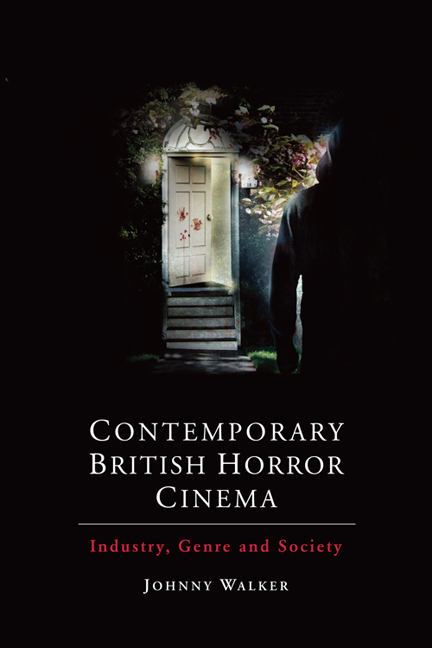Summary
In 2002, the filmmaker Richard Stanley sounded the death knell of ‘the great British horror movie’. His ‘obituary’, which appeared in Steve Chibnall and Julian Petley's edited volume British Horror Cinema, lamented the general absence of any real directorial talent at the turn of the millennium, noting that the horror film directors ‘who really knew what they were doing escaped to Hollywood a long time ago’ (Stanley 2002: 194). Stanley cited the direct-tovideo occult horror The 13th Sign (Jonty Acton and Adam Mason, 2000) as offering a glimmer of hope, but concluded that it was ‘still a long way below the minimum standard of even the most vilified 1980s product’ (2002: 193).
Stanley's pessimism was not unfounded (even if his assessment of The 13th Sign was perhaps a bit unfair). Hammer Films – the once-prolific film studio responsible for the first full-colour horror film, The Curse of Frankenstein (Terence Fisher), in 1957, and a host of other classic British horrors over the next two decades – buckled under market pressure and ceased making feature films in 1979. The 1980s, therefore, saw the production of only a handful of British horror films, which, at any rate, were mostly thought of as American productions that had peripheral British involvement, such as Stanley Kubrick';s blockbuster The Shining (1980) and Clive Barker's franchise-initiating Hellraiser (1987). Others from the decade were artsy one-offs, such as the Gothic fairy tale The Company of Wolves (Neil Jordan, 1984), or (as was most often the case) amateurish flops, such as the cheap and clumsy monster movie Rawhead Rex (George Pavlou, 1986). Aside from the very occasional hit, most of these were critical and commercial failures (Conrich 1998).
The following decade was similarly dire. With the exception of a smattering of micro-budget releases like Richard Stanley's own Hardware (1990), Funny Man (Simon Sprackling, 1994), Razorblade Smile (Jake West, 1998) and Darklands (Julian Richards, 1996), the 1990s did not proffer the most encouraging environment for indigenous horror film production. The ‘video nasty’ moral panic that had plagued the 1980s was given new life in 1993, when toddler James Bulger was murdered by two children who had allegedly been inspired by the video release of Jack Bender's killer doll film Child's Play 3 (although no evidence was ever found to support this claim).
- Type
- Chapter
- Information
- Contemporary British Horror CinemaIndustry, Genre and Society, pp. 1 - 13Publisher: Edinburgh University PressPrint publication year: 2015



